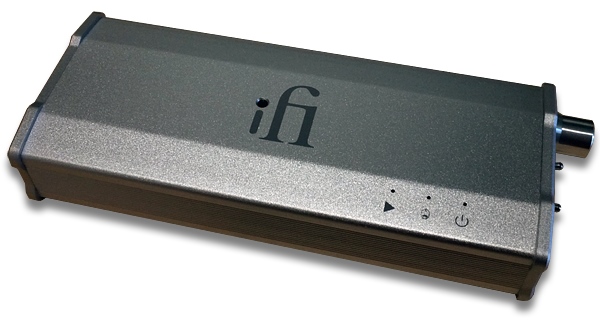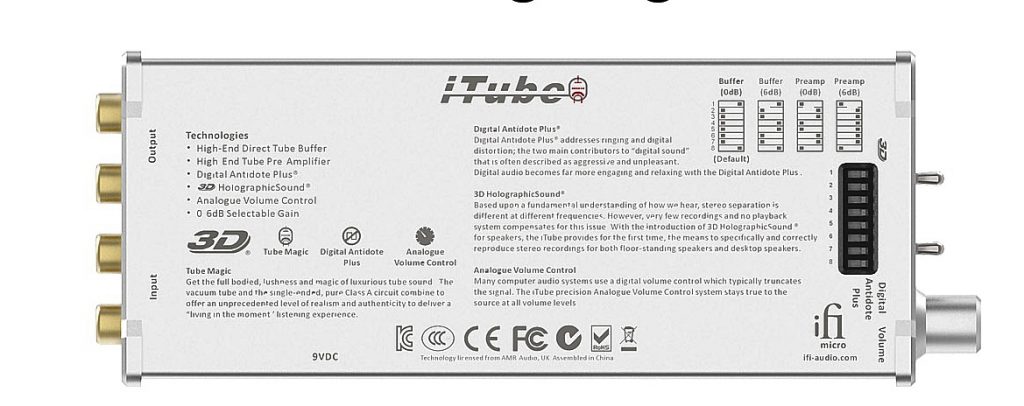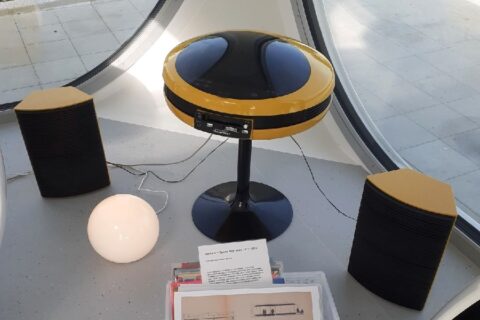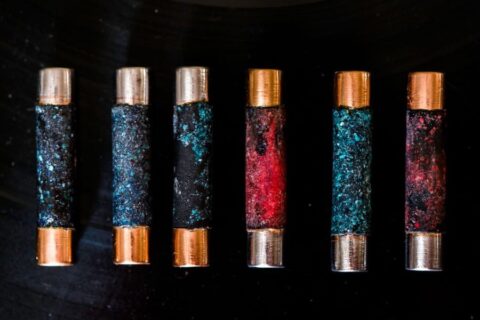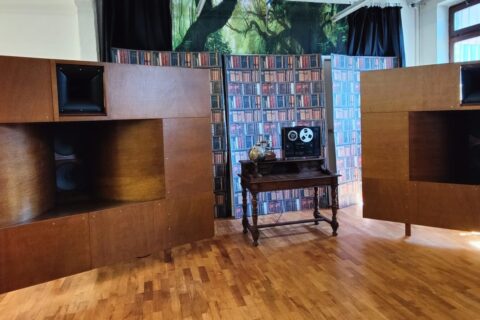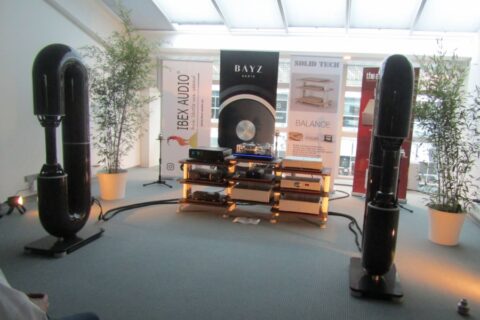When enough people believe that listening to music via a usb-dac through small active speakers is a norm, it becomes a norm. Logical inevitability there is none. But that is pretty much the situation where we are now, and it has given rise to a dilemma recognized by many hi-fi retailers: what to sell in between the usb-dac and active speakers?
Nobody prevents from connecting the dac directly to active speakers, and set the volume from the computer. This is not generally considered to be an ideal solution, however, provided that bits are to be kept as bits, and the original dynamics original.
Some manufacturers have responded by adding an active volume controller to their dac. The result depends on how the volume control has been implemented. Many doubt the quality of current digital controls especially.
iFi iTube
iFi by AMR has chosen another tactic. They produce a range of usb dacs as well as devices that are designed to improve the dacs’ performance. But between the dac and the speakers, or a dac/cd player and an amplifier, iFi suggests a compact device, which they call “buffer/pre-amplifier”, and which is named as iTube after the glowing vacuum tube inside the chassis.
The rationale for the little “gadget” springs from the belief that virtually all hi-fi installations, whether built around a computer or situated in a dedicated listening room, suffer from digital nasties. With the iTube the problem can be fixed or at least mitigated.
Technically the iTube is an active amplification stage without (or almost) amplification between the sound source and the amplifier. Functionally it is a single sophisticated tone or sound controller, for all it aims to make is editing the sound: the Antitode circuit provides antitode to digital harshness, the tubed buffer bestow warmth to transistors/IC circuits, and the 3D system a new kind of stereo imaging for speakers.
The tube is NOS General Electric 5670. No digital signal processing is used. What the iTube does, it does it in a Class A analogue environment. The same goes for the volume control, which according to the manufacturer does not inadvertently truncate or modify the signal as digital controls tend to do.
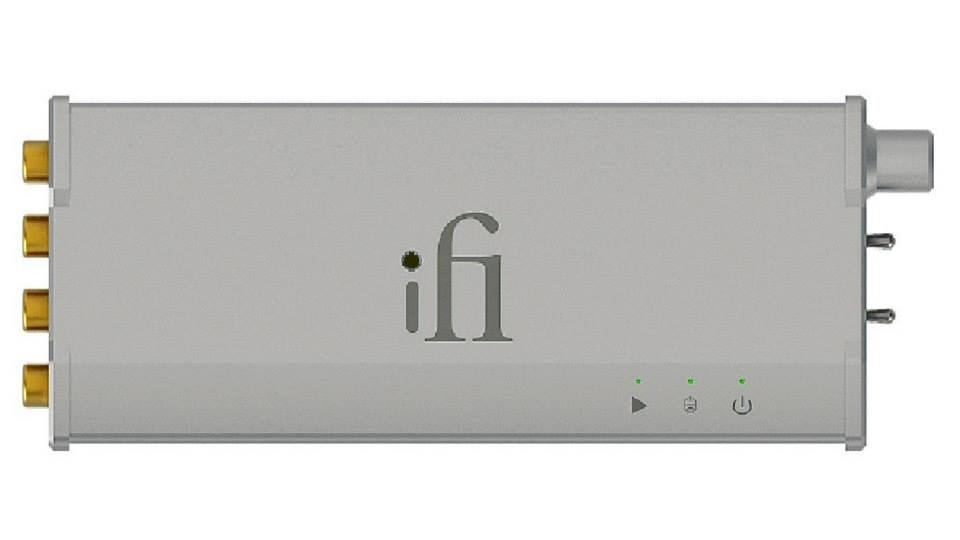
The iTube as antitode
The Digital Antitode Plus is an updated version of Tony Taddeo’s Digital Antidote circuit that he developed in the 1990s. This analog circuit is supposed to cure “ringing and distortion” related to digital playback specifically, by dealing with the inputted signal (fixes its phase and timing). As a result, the sound is said to be less aggressive and causing less listening fatigue.
Those who are afraid of Antidote Digital Plus making to the signal something that it should not, no matter what it does to the sound, can disactivate it from the front panel switch.
Despite quick switching, it was far from child’s play to determine what the Digital Antidote Plus did to the sound, if anything, partly because of the magnitude of the change (minuscule), and partly because of the fact that the iTube brings along a tube to the signal path. I tried to exclude the tube effect by first getting familiar with the sound of the iTube as a mere pre-amplifier.
For the evaluation I first took an ordinary “everything in one IC” type of DVD player (Denon 1710), the only digital player of which I know for certain (or almost) that the “sound” changes when its own dac section is replaced by an external dac, in this case my Sentec Di-Ana converter (Burr-Brown PCM-1756).
I listened to the DAP circuit (on/off), first, the iTube directly behind the DVD player, and then behind the Sentec the dvd player as a transport. The iTube was operating at the same time as a preamplifier for a DIY tube power amp, and speakers including eg. vintage horns (cables by Graditech).
I focused on recordings with plenty of acoustic information, cymbals, and human voice (sibilants). I also listened to closely mic’ed violins or trumpets in order to see/hear if I could detect any irritating digital roughness.
I couldn’t. Reliably. If anything, the Antitode circuit appeared to change the sound of the DVD player to the same direction (more expanded, better breathing) as my own dac did, but the difference wasn’t as obvious as the difference brought by adding the the dac.
Maybe the problem was my 20 year old dac? Somewhere iFi states that if the dac sports no over- and/or upsampling, there’s a chance that “bits really are bits”. If that’s the case, the sound may not require Antitode type of correction. So I took a more modern, upsampling dac M2Tech EVO, but still had troubles in telling the difference. For instance, I didn’t discover that the DAP would have cut the highest frequencies (a possibility acknowledged by iFi). Even if it did, it ‘s hard to imagine that anything musically important would have been lost.
In conclusion then, I assume what will happen is that those who have not previously heard any differences with the Antitode type circuits, won’t hear them with the Antitode Plus, while those who’ve been able to associate sound differences with the presence of an Antitode circuit, do hear them now too. The situation is somewhat similar to that if a DA-converter with a polarity switch (180 degrees): occasionally it appears as if it makes a difference, some other times not. But why not try it. It’s just a matter of flipping the switch.
… as a preamp
At the next stage, I tested the iTube as a preamplifier, meaning that I routed, from a jumper on the bottom, the signal through the volume control and chose 6dB of amplification. The point of comparison was my vintage tube preamp in front of a EL34 and 6V6 PP power amps, and as music Bach’s cantatas (Ian Boldridge), 1959 Ben Webster and Trisha Wood’s snotty country music.
This time the differences were more pronounced, though not as significant as one might expect. The most notable difference or impression was that the iTube, as a preamp, sounded less rounded and soft than the vintage preamp. As if the sound was a tad clearer and spatially a little narrower. Not a big deal. The iTube sounded more modern, but I didn’t have anything against the way in which it did it.
The iTube is a fine sounding little preamplifier for suitable systems, and useful too, provided that 6dB of gain and one input is sufficient. It’s an excellent choise for desktop systems with small active speakers. Impedance matching problems should not arise, even with low impedance transistor power amps or active speakers.
… as a tube buffer
A buffer the iTube becomes when the volume is bypassed and the gain set to zero. The purpose of a buffer is to assist in impedance matching between the two devices, and to “make a sound more pleasant”, which is why a buffer stage more frequently than not is realized around a vacuum tube. Regarding the grace of a tube sound, iFi refers to Jurgen Ackermann’s studies at the University of Frankfurt (Department of Music and Performing Arts).
I first tried the buffer iTube together with a passive preamp (ELNA step attenuator), and then between a CD player and a transistor amp. For the first test, Denon DVD/M2Tech Evo Dac drove a tube power amp through the passive pre, and the buffer between the passive pre and the power amp (can be put in front of the passive controller too). The buffer’s input impedance at the 0dB setting is 1 megohm, and with the 6dB setting 100 kilo-ohms. No impedance problems was expected.
And yes, having the buffer between the passive pre and the power amp was absolutely worth it. The sound/performance became not so much “more analog” than “more vivid, more intense and straighter”. Guitar solos and the sound in general was less “thin” as with the passive pre only. The buffer didn’t add any hiss, or if there was some, it was of civilized nature. The change was a positive one, whether the gain was 0 or 6 decibels.
The results were similar when the buffer (0dB) presented the sole tube to the signal path in a system consisting of a cd player/dac and Rega Brio-R transistor amp. The music appeared to sound a tad more forgiving and airy, the difference being notable but not dramatic.
Tube buffers do have a certain reputation. They are said to color the sound, make the presentation sound slower, reduce the resolution, trivialize the dynamics and remove the highest frequencies. Such considerations should be kept in mind when buffers are tested, but here too one must be careful. For example, a certain softening of the tone can easily be interpreted as the sound being anemic even if the it were as vigorous as ever.
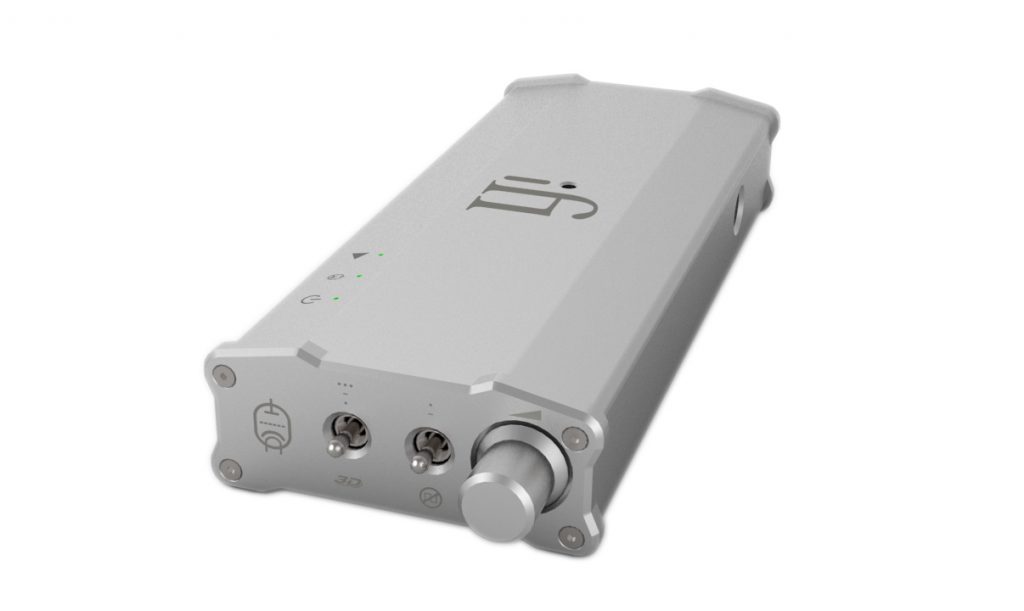
… for 3D imaging
3D stereo expanders are a familiar feature in headphone amps, such as the 3D HolographicSound system in IFi’s own iCan. The iTube’s 3D HolographicSound aims to extend the technique to the speakers. IFi’s argues for their 3D technology by referring to Alan Blümlein’s, the father of stereo, observation that human stereo hearing is more accurate at high than low frequencies, and that therefore it may happen that one and the same instrument, depending on the frequency being played, is situated in the stereo field differently. The 3D system will correct the the stereo effect in two ways, depending on whether the speakers are listened from a distance or in the near fiedl (computer).
The iTube is a no-nonsense device. It is absolutely certain that the Antitode circuit, as well as the buffer stage and the 3D technology will do something to the signal on an electronic level. The question is what type of impact the three make to sound, and how large the impact is? While the effect of the Antitode seemed possible but speculative, the effect of the buffer more likely, there’s no doubt whatsoever that the 3D technology changes the sound audibly.
From the distance (the main speakers) the 3D technology seemed to push the low frequencies toward the speakers as predicted. The midrange stays in the middle of the image, but somehow changes its character. From a distance less than one meter, the 3D circuit opens up and widens the stereo image, accompanying instruments are pushed towards the speakers and the singer on the stage takes five steps backwards. It is as if the sound would have received one dimension more. But how should one react to the changes caused by the 3D technology?
That question is trickier than one might imagine, and I don’t think there’s one right answer to the beneficience or harmfulness of the 3D correction. The end result varies greatly from a recording to another, and there’s no easy rule as to which type of recordings will benefit from the correction, and which recordings sound maybe too unusual. But it was tremendously fun to try and listen to familiar discs with a slightly different stereo image, and to reflect on the true nature of the stereo at the same time.
I’d not recommend the iTube as a toy, although with the 300 euro price tag the idea might be tempting. But given what the iTube can do, I’d be amazed if the device would find interest in the market: the users of passive controllers, those that need a preamp for their computer audio systems, those not happy with the performance of their USB DACs, those that need a quality volume between the DAC and active speakers, those who would expect more from their computer speakers in terms of the stereo image. That is, I can see very many who would immediately benefit from inserting this IFi’s tool in their system. Naturally, the final outcome will always depend on the gear used before and after the iTube.


